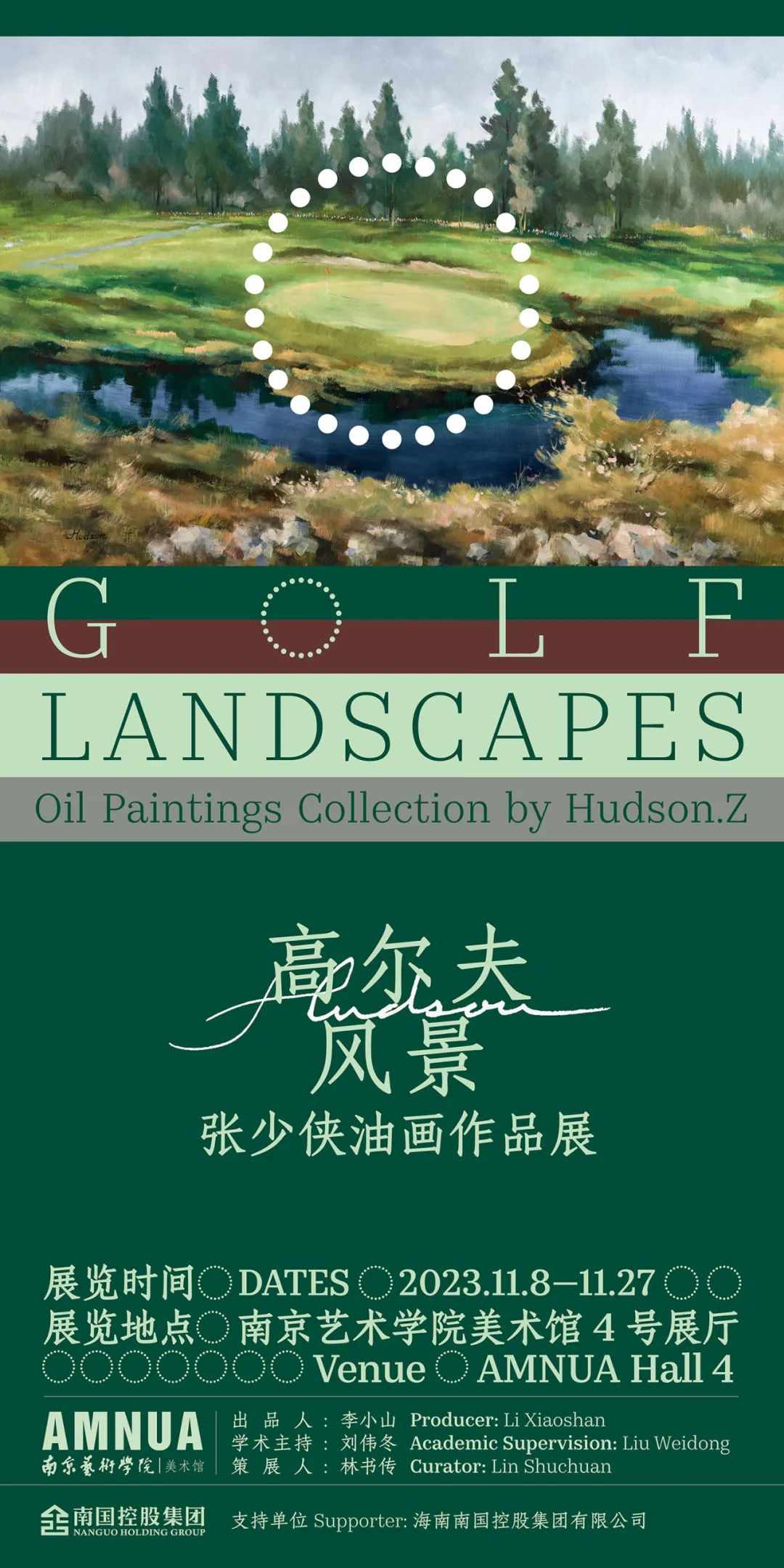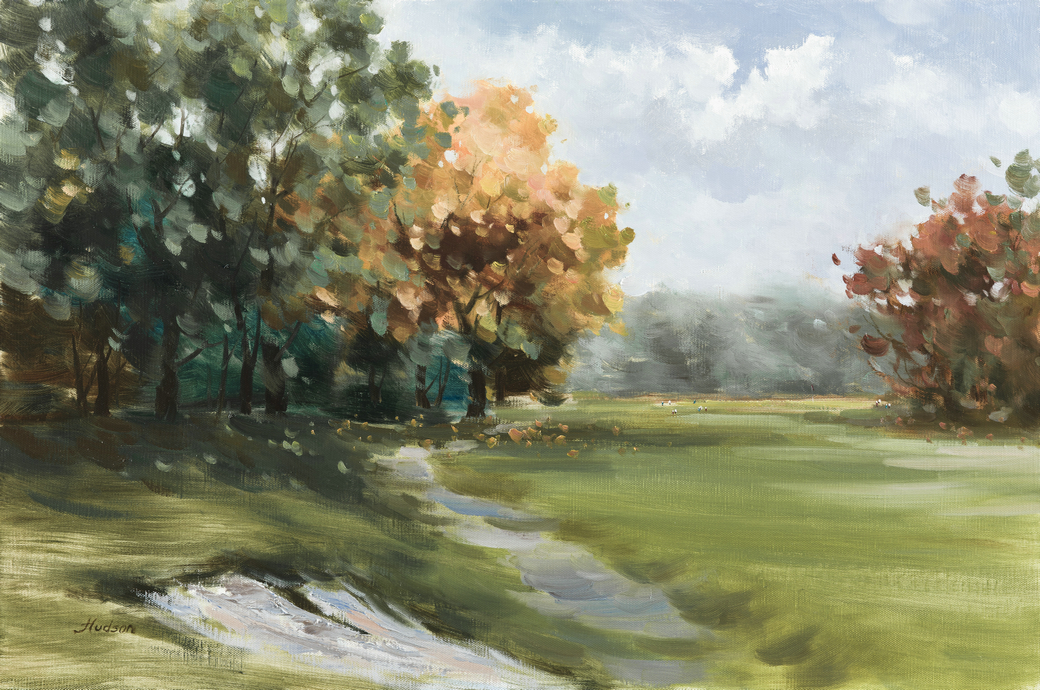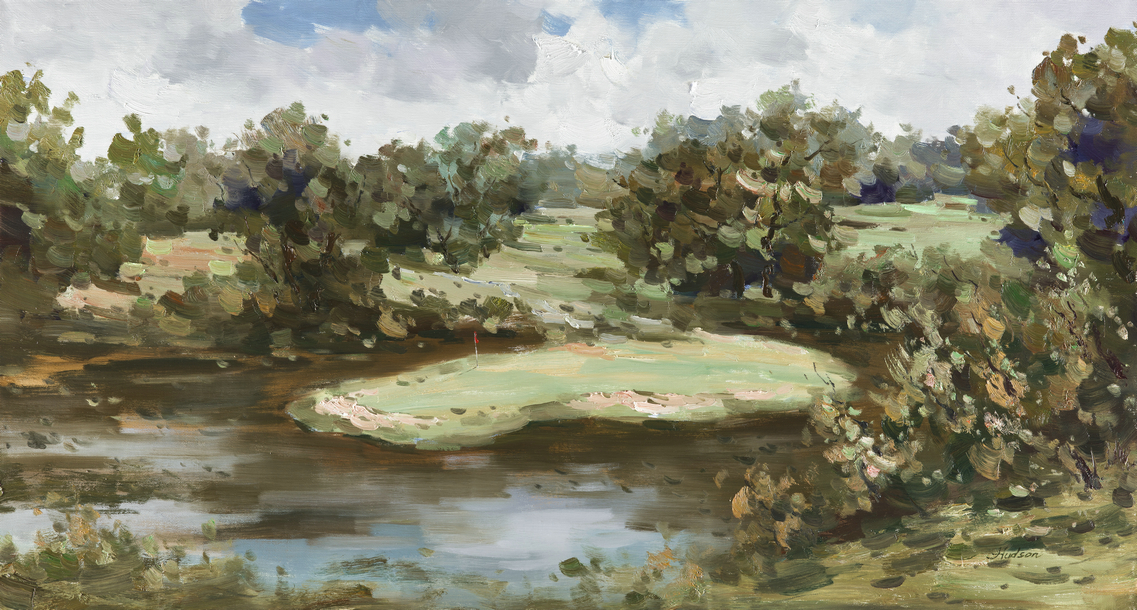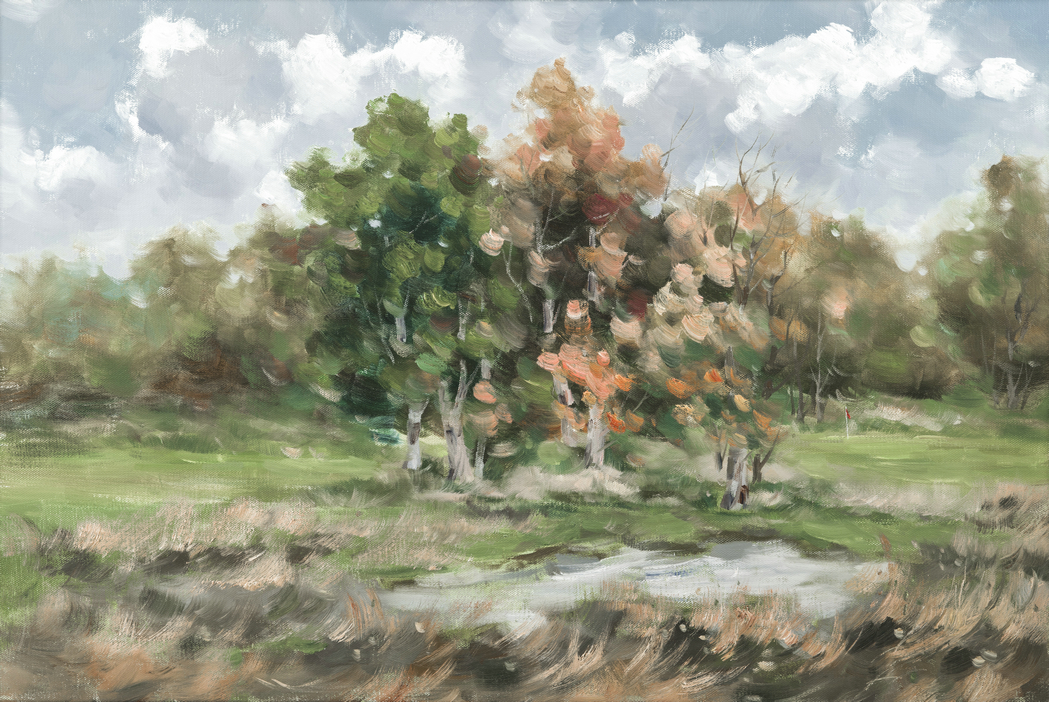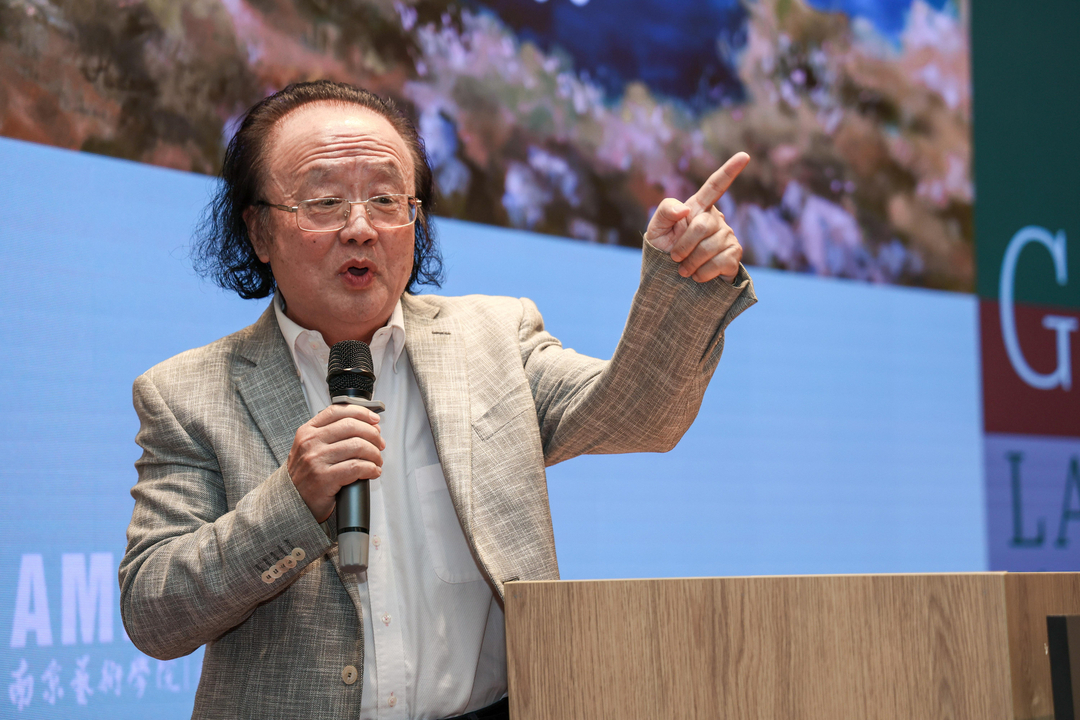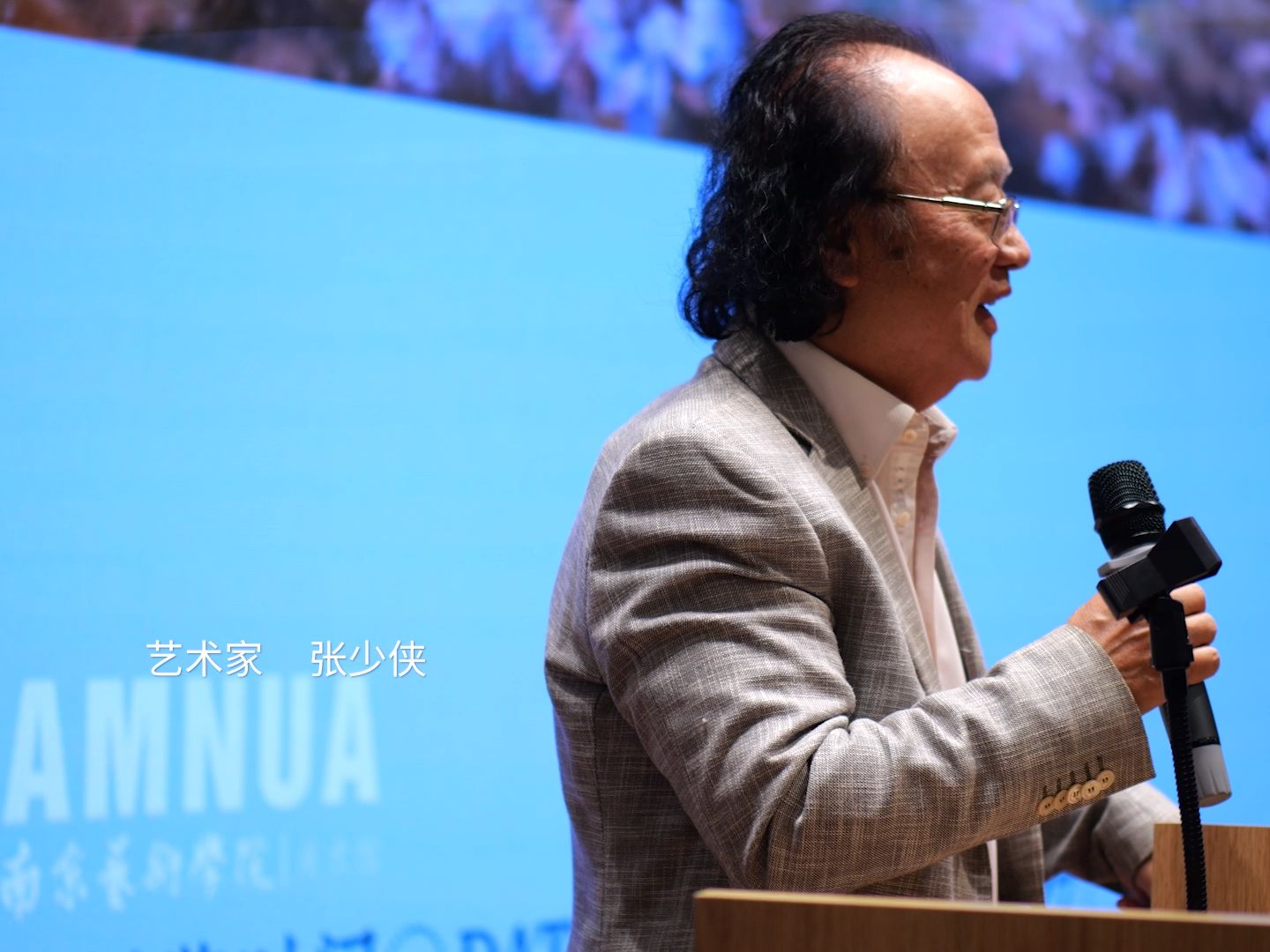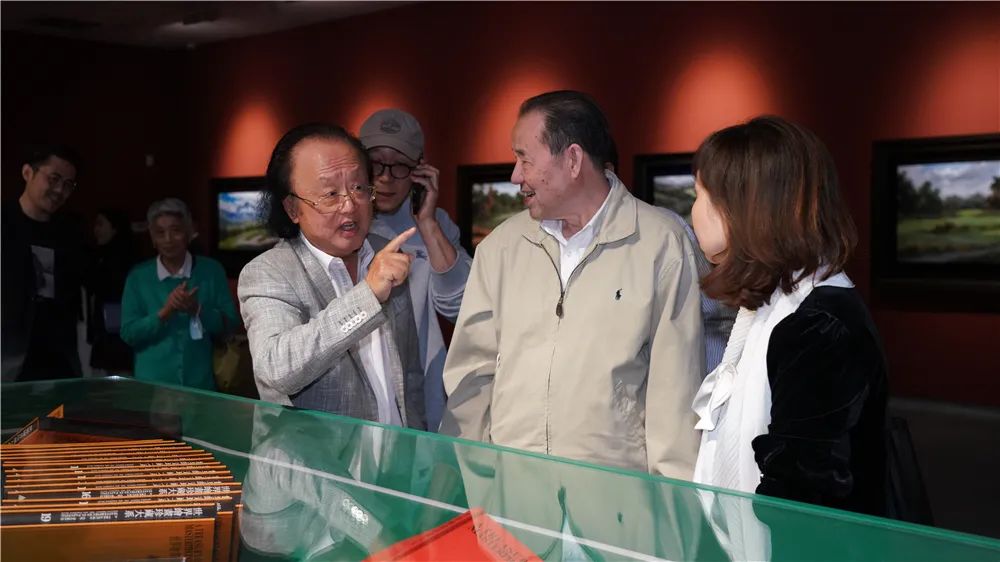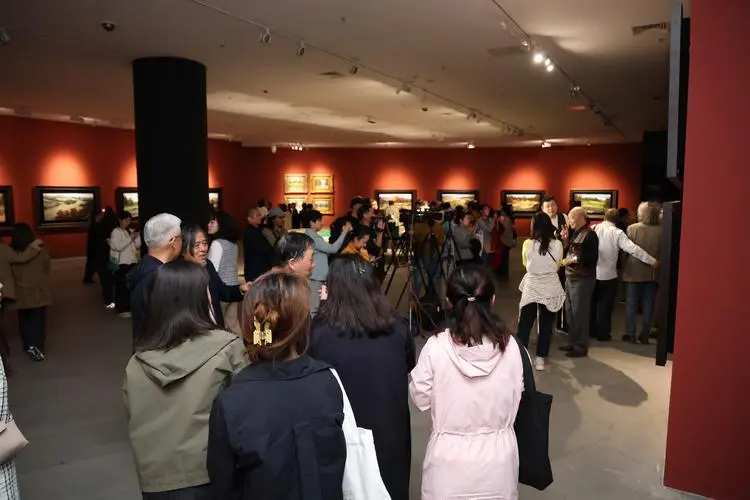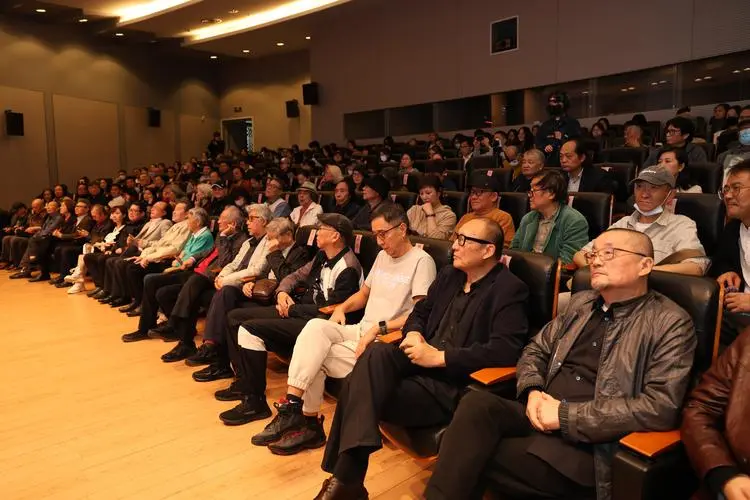Shaoxia ZHANG
GOLF COURSE LANDSCAPES
Oil Paintings Collection by Hudson Shaoxia
GOLF LANDSCAPES | Oil Paintings Collection by Hudson.Z
Artist : Zhang Shaoxia
Producer : Li Xiaoshan
Academic Supervision : Liu Weidong
Curator : Lin Shuchuan
Duration :2023.11.8—11.27
Venue : Art Museum of Nanjing University of the Arts
Curator’s Note
Lin Shuchuan
I had known of Professor Hudson.Z's name for some time and was aware ofthe book he co-authored with Professor Li Xiaoshan, titled A History of Modern Chinese Painting. Two years ago, Professor Li asked me to search online for this book to check if it was available for purchase. The publication was relatively old, and his office's last copy had been borrowed by a friend, Later, I learned that a British publishing house was planning to translate the book into English, and I managed to locate it on the Confucius Old Book Network. I bought two copies, one for Professor Li and another for my office. Unfortunately, I never had the chance to read it in detail. One day, not too long ago, Professor Li showed me pictures on his phone and asked, "How are these paintings?" l hadn't yet figured out whose works they were when he began talking to himself, "Shaoxia does everything with such seriousness. When he decides to do something, he always succeeds. Look at what he's currently working on..." That was the moment when we decided to organize a solo exhibition for Professor Zhang at the Art Museum of Nanjing University of the Arts, and I became the curator.
To curate Professor Zhang's solo exhibition, I needed to become familiar with him. Before I met him, I had already formed arelatively abstract and fragmented image of him from my conversations with Professor Li: from his bearded appearance and Nanjing-accented teaching style to his unmatched capacityfor alcohol. He was not only the youngest associate professor at Nanjing University of the Arts, but also a prolific art historian. He had served as a university professor, led the Academic Affairs Department in the arduous process of applying for a doctoral program, became the dean of the School of Arts at Hainan University, succeeded in the business world, and now, devotes over ten hours a day to facing the canvas as an artist, I carefully reviewed the book A History of Modern Chinese Painting thatI had at hand, hoping to understand him through his writingswhich was the most direct approach. It was different from the massive art history books we often come across. This book completely departed from the conventional formula for writing history. From chapter titles to the content, the temporal aspect of art history was merely used as a writing thread. Under the premise of detailed objectivity descriptions of art events, artists, and artworks resembled acritical language, with a critical attitude. Many view points even when viewed today, remain sharp and effective. His character, much like the meaning of his name "Shaoxia"(which means young hero or knight-errant), gradually emerges between the lines from his books and writings. If we were to depict him like the knight-errant characters in novels, traveling the vast desert alone, it would be fitting. In that image, he would be with a bottle of wine at his side and a sword hanging from his waist.
I finally met Professor Zhang a few months ago when Professor Li and I went to Haikou to see his paintings. His studio was on the top floor of the headquarters building of his company, with windows overlooking the Qiongzhou Strait, and the room was bathed in sunlight. Every corner was filled with his artworks, permeated by the smell of oil paint. "Let's call the workers to reposition the curtains; the sun is too strong, and the paintings near the windows might get damaged." He instructed his assistant to handle these daily matters. His accent hadn't changed, but his beard was gone and, of course, there was no sword at his waist. "Xiaoshan, I'm not doing anything else now, just painting. Painting golf courses is a challenge. If I make them too realistic, they lose their appeal, but if they don't capture the essence of golf courses, they lack meaning." It was only upon visiting his studio that I realized the landscape paintings he showed me on Professor Li's phone earlier had a very distinct creative theme, namely, his life's narrative over more than thirty years playing golf. During that afternoon, amidst the hundreds of artworks in his studio, he carefully selected them one by one. He discussed them with the knowledge of an art historian, delving into the context of each piece, analyzed them from anartist's perspective, exploring techniques and textures, and finally, as a golfer, he reminisced about the remarkable stories and achievements behind each artwork.
"My American friends searched using ChatGPT, and it seems there isn't anyone who has been painting golf courses continuously. They're really hard to paint; it's challenging to capture the right balance. Look at how these people just make golf courses look plain." While he scrolled through the pictures on his phone, he opened a bookshelf. On the shelf sat a series of books authored by Professor Zhang over the years, related to the history of arts and crafts, which he had compiled. There was the first set of mimeographed textbooks European art History used by NUA, manuscripts of A History of Modern Chinese Painting, a 20-volume series titled World Painting Treasures, and complete sets of European and African craftsmanship history. He said, "Whether you decide to include these books in the exhibition or not, they are now part of the past." The discussion returned to the exhibition. Surprisingly, for such a successful artist, Professor Zhang chose an unconventional, "non-successful" approach for his first solo exhibition as an artist. "I don't think we need to have an opening ceremony," he suggested, "If some old friends can make it when they see the announcement, that's enough. We don't need to specially invite guests and critics. Returning to my alma mater, showing artworks to students, and perhaps giving lectures would be great." We discussed the exhibition in detail for quite some time. It was a process of addition and subtraction. He removed everything unrelated to the artworks, especially those that required public appearances. He kept reducing those aspects. On the other hand, discussions about matters related to the artworks, such as exhibition lighting, the arrangement of the exhibits, the framing of the paintings, and the colors of the exhibition walls, continued for several months. The result of these discussions, as he had hoped, led to the cancellation of a conventional opening ceremony. However, more than thirty years later, today's students at NUA have the opportunity to attend Professor Zhang's lectures on Western art history.
Professor Zhang is an efficient person. After the detailed and efficient discussions about the exhibition and the artworks, it was time for some hospitality. Just as every Nanjing resident has their favorite salted duck, Professor Zhang, being a Hainanese, treated us to his beloved dish -Wenchang chicken. "Let's have some drinks, and more meat!" He proposed, "We must have meat!" We chatted loudly, enjoyed drinks, and indulged in meat. The man in my imagination, a knight-errant, remained unchanged.
During our journey back to Nanjing, Professor Li and I discussed Professor Zhang's remarkable energy and dedication. "He approaches everything with meticulous thought," Professor Li said, "Whatever he does, he gives it his all, and the results are always outstanding." After spending a short amount of time with Professor Zhang, I seemed to have found what the exhibition needed to convey. Apart from the artworks still growing under his brush, there was something else. About his personally, every success within the framework of success psychology could be regarded as a sociological example. Every seemingly simple action, every layering and transformation of personal identity, had a gradual and challenging buildup. These examples were exactly what needed to be presented to students and the audience. Since 2018, he has gradually shed all extraneous roles and focused nearly all his time and energy on his current creative painting work. The studio was stacked with hundreds of works, each speaking for itself. While he has reached an age where the academic world might consider him master, he continues to exemplify a vibrant work ethic to inspire younger generations. The exhibition at Nanjing is just the beginning of this new journey for the artist. With curiosity and concentration, he is sure to bring us surprises with his paintings at his upcoming solo exhibitions at the University of London next year and at the Bellini Museum in Florence, Italy.

